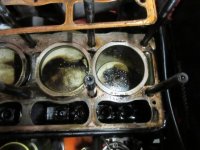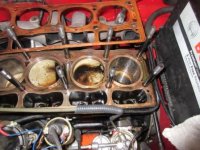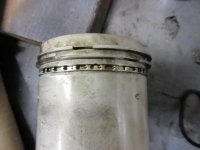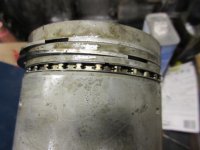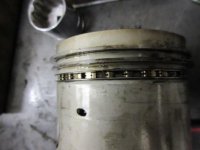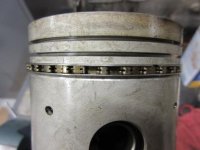Offline
I'm starting a new thread about my burning of oil on my totally rebuilt TR4A engine. I just borrowed a camera scope and dropped it down each piston.
The pistons are all clean and shiny around the edges of the sleeves. That can only mean one thing as I see it. I installed all scraper rings incorrectly. All four.
Defective or incorrect set of rings--not likely.
I distinctly recall carefully assembling those rings and following the written instructions. How I could ever have actually overlapped those tabs escapes me, but I did have some things going on back then, and I suppose I could have goofed up really bad.
Anyway, out come all pistons. what a joy this will be. But I love it.
Any advice? Go back to my regular day job? Never touch a friend's car? Wear a disguise?
Did I hurt the engine? I've put about 2200 miles on this rebuild running around burning oil. What do I check other than the the rod bearings?
Peace.
The pistons are all clean and shiny around the edges of the sleeves. That can only mean one thing as I see it. I installed all scraper rings incorrectly. All four.
Defective or incorrect set of rings--not likely.
I distinctly recall carefully assembling those rings and following the written instructions. How I could ever have actually overlapped those tabs escapes me, but I did have some things going on back then, and I suppose I could have goofed up really bad.
Anyway, out come all pistons. what a joy this will be. But I love it.
Any advice? Go back to my regular day job? Never touch a friend's car? Wear a disguise?
Did I hurt the engine? I've put about 2200 miles on this rebuild running around burning oil. What do I check other than the the rod bearings?
Peace.

 Hi Guest!
Hi Guest!

 smilie in place of the real @
smilie in place of the real @
 Pretty Please - add it to our Events forum(s) and add to the calendar! >>
Pretty Please - add it to our Events forum(s) and add to the calendar! >> 


